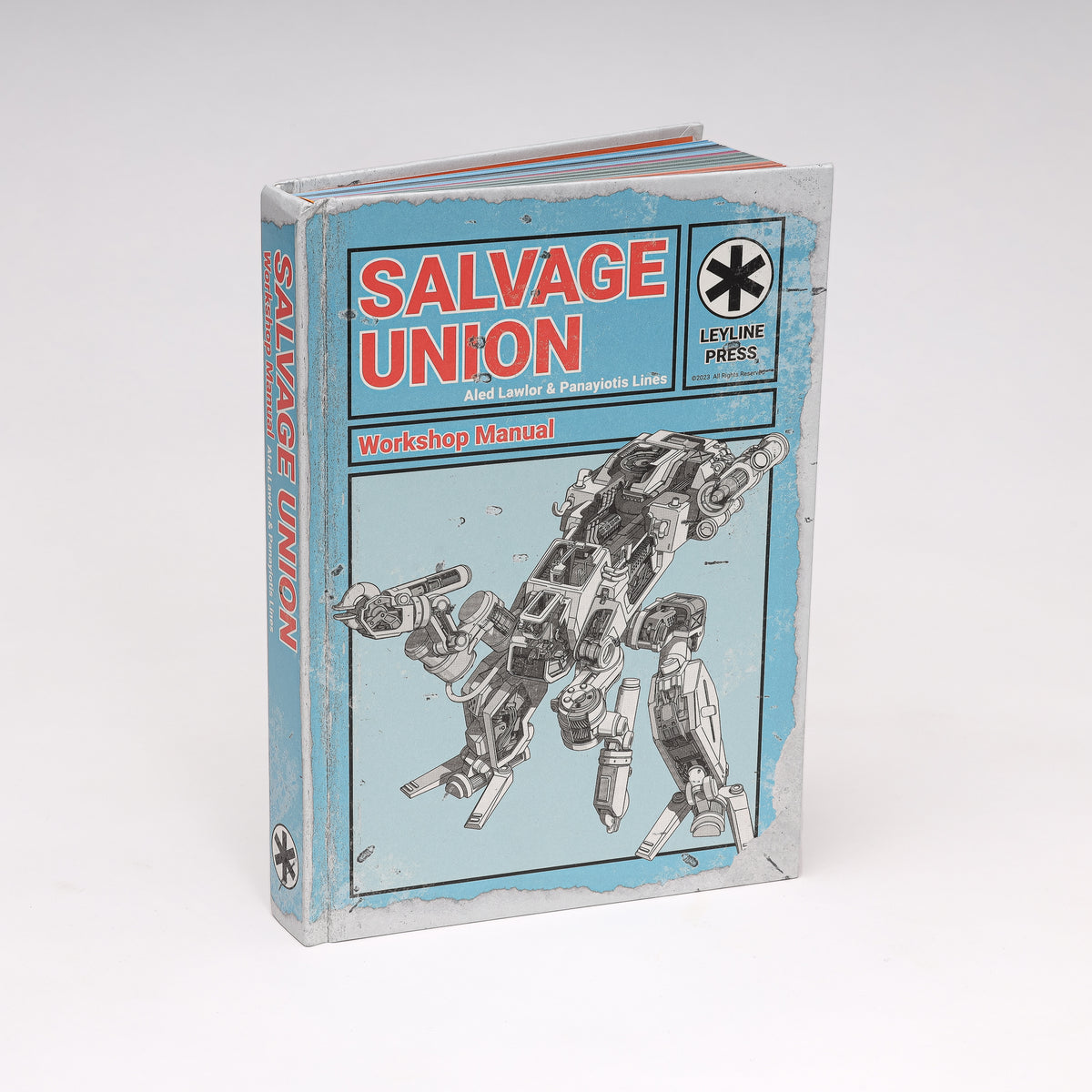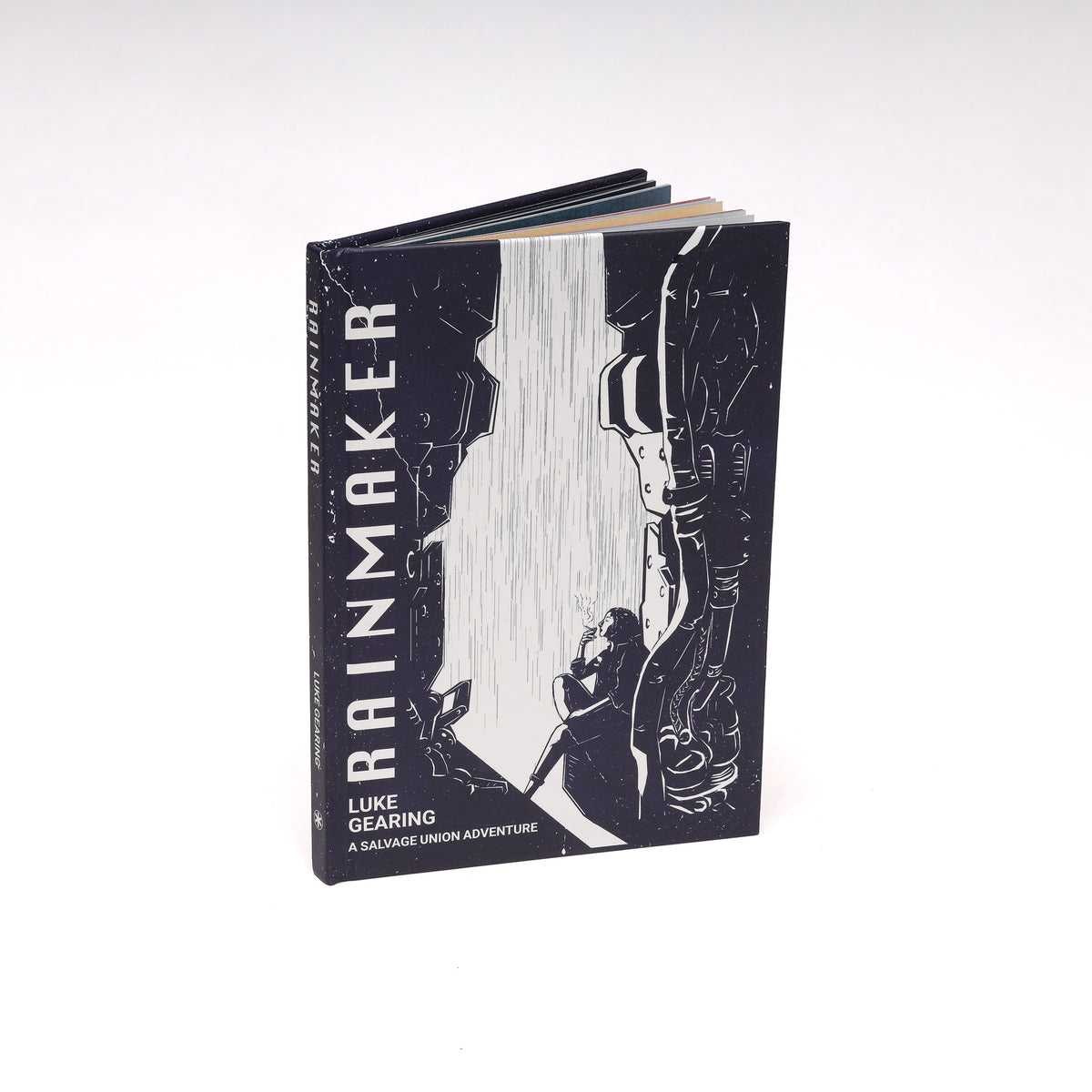In this series of blogs we're exploring the various OSR RPG systems in the community and how they compare to one another and the original D&D rules.

Into the Odd by Chris McDowall is about the exploration of a bizarre, wondrous and horrific world that is too large to map. Characters take on the role of an explorer within that world out in search of riches, knowledge and power. The setting itself is split into the safety of Bastion where folk live and work and ‘The Underground’ an ‘odd world’ comprised of twisting tunnels, ancient caverns and strange beings beyond the imagination.
This introduction perfectly encapsulates what Into the Odd is about especially when you factor in knowledge of the history of DnD and the general ‘OSR’ movement. Essentially Into the Odd distils the ‘Old School’ DnD experience into a sharply honed blade focussing on that first moment your group goes from the safety of the village to the terrifying unknown of the dungeon and building the entire game around it.
The games mechanics are distilled in this regard with large amounts of fat stripped off even for a typically rules lite genre of games in order to focus purely on the core experience and get playing as quickly as possible.

Characters are built from three ability scores Strength, Dexterity and Willpower. This is 3 less than your standard D&D spread of six and is even less than comparatively minimal OSR games like Mork Borg which has 4 stats. Strength and Dexterity remain broadly the same as you’d expect, with Strength covering Fighting, fortitude and toughness and Dexterity Grace, athletics and reflexes. Constitution has been bound with Strength in this regard.
Willpower covers confidence, discipline and charisma and is effectively an amalgamation of Wisdom, Charisma and Intelligence.
The core mechanic is d20 roll equal to or under appropriate ability score. This is a similar system to what The Black Hack uses, it was also included as a resolution mechanic in Basic D&D.
A 1 is always considered a success and a 20 is always considered a failure and there’s no additional ‘critical’ effects such as what you’d find in Dungeon Crawl Classics.
The biggest change to the framing of the core mechanic within Into the Odd is that the only core rolls in the game are saves and damage. There’s no concept of an ‘ability check’ and instead if your character does want to do something like say leap over a ravine that would be classed as a strength or maybe Dex saving throw. This is a really clever piece of framing as it takes the oft repeated advice of ‘only roll a die when a situation is relevant’ and ties it to the saving throw mechanic which typically exists for situations that are inherently risky. This means die rolls will be far more relevant organically and there will be a lot less questions throughout play of whether or not a die roll is needed as you can just ask yourself if what the player is doing would warrant a ‘saving throw’. Otherwise the thing can just happen.

There’s no attack rolls either which is a significant change from how original D&D as well as many other retro clones and RPGs handle combat. Instead attacks are just assumed to hit when within combat, they deal d6 damage on average and the damage is subtracted from the targets HP and then their STR when HP is reduced to 0. It’s left to the referee and players to adjudicate when a hit occurs and most of the time it’s just ‘automatic’ though this is a tricky one for some players used to attack rolls to get their head around.
Armour in the game is damage reduction much as in The Black Hack. Damage is variable too, with d6 being the assumed ‘default’ but with weapons such as crossbows dealing d8 and powerful enemies such as the ‘Jaw Beast’ dealing d12 damage. If an attack is impaired in some way, such as the target being behind cover, the attack deals d4.
Characters universally start with d6 Hit Points but HP in the game is explicitly a ‘buffer’ that abstractly represents a characters ability to avoid life-threatening damage. When a character reaches 0 HP they are wounded and any remaining damage directly impacts their STR score or ‘meat points’. They then have to pass a STR save or take Critical Damage. If they do suffer Critical Damage they cannot act and must be tended to by an ally then Short Rest which is just a few minutes in this system. If left for an hour without being aided they die. If a character's STR score reduces to 0 then they die.
Whilst this seems potentially deadly on the surface the multiple layers of it mean that characters are surprisingly more survivable than they would be in say Basic & Expert D&D where you just die at 0 HP. This is somewhat similar to the ‘Flesh and Grit’ rule seen in Esoteric Enterprises or the ability scores are health mechanic of Forbidden Lands. Making a clear differentiation between as it were 'meat points' and 'fate points' helps to clear up the dissonance HP systems sometimes provide where a character can be 'hit' by multiple arrows and sword blows but be 'fine' as far as the game is concerned.

Combat assumes players go first but if there’s a risk of surprise they must make a Dex Save to be able to act first which is a clean and simple utilisation of a surprise system similar to the one found in Mothership.
Likewise the referee within Into the Odd makes a highly limited amount of rolls than normal. Saving throws are intended as primarily player facing, the referee will roll damage when appropriate but there’s no reason the players can’t do that against themselves either.
One exception to this is that the referee is encouraged to utilise a ‘luck roll’ mechanic. This is a d6 roll with a high roll favouring the Players and a low roll meaning bad luck for the players. It’s intended for any situation where a saving throw doesn’t quite fit, for example when you want to see if players making a lot of noise would alert some nearby guards. It’s in a sense an extrapolation of the random encounter mechanics from Basic and Expert D&D where typically a roll of a 1 on a d6 meant the party had a random encounter.
Within Into the Odd this is extrapolated and far more loosely and broadly applied to a myriad of in-game situations. Whilst in theory a referee could just make these decisions as appropriate, having a dice to fall back on does allow a more ‘neutral’ cushion.
Within Into the Odd this is extrapolated and far more loosely and broadly applied to a myriad of in-game situations. Whilst in theory a referee could just make these decisions as appropriate, having a dice to fall back on does allow a more ‘neutral’ cushion.
There’s no classes in the game and your character is primarily differentiated by stats and your starting package of equipment. These packs include multiple different types of equipment that your character begins the game with and are generated randomly as well based on your highest ability score and your HP. There’s a logic to this with higher HP getting more combat focussed items and lower HP giving you access to the likes of poison and ‘Arcanum.’ Numerically high ability scores confer additional penalties like being illiterate, in debt or mutated. This is to balance out characters who roll better and whilst contradicting the idea of 'Gygaxian naturalism' is a welcome addition for those who think RNG during character creation is a bit too harsh at times.

You also start with a companion. Most OSR systems have hireling mechanics but few of them give you a free hireling off the bat, which often misses a trick as players are often reluctant to hire someone. However they are in practice invaluable to survival so just giving players one to start with is a good way to encourage such play. Companions start with 1 HP and a hand weapon so they certainly won't break the game either if players have too many.
Arcanum is the core way magic is handled within the game. There's no 'caster' class due to it being a classless system. Instead anyone can use the various Arcanum within the game which are magical artifacts that can be triggered for a variety of effects. These include a ‘Foul Censer’ that makes green smoke missiles can’t pass through billow everywhere, a Skull magnet that attracts or repels a target with a boney skull and a Rainbow Blade which can fire beams of harmless light of any colour.
As you can tell the items and their effects are of a broad and often esoteric nature which highly encourages the OSR Principle of creative thinking. There’s not many generic effects like straight damage and spells old school D&D players would be familiar with such as fireball or sleep don’t really exist within the game. This makes Into the Odd a interesting mix of the familiar and unfamiliar or...odd.. This spell system works in a similar way to Mork Borg which also technically is classless and the ‘magical’ effects come from items and in the case of Mork Borg scrolls.
Arcanum characters obtained during character creation are rolled randomly on a d66 table and further ones can be found during play. There’s further greater and legendary Arcanum with increasingly powerful effects such as the Black Hole Collider, i.e. Sphere of Annihilation, which creates a five foot black hole that destroys everything it touches. These objects are rare and it’s noted that they will be sought after by other dangerous denizens of the dark so must be kept safe and as secretive as possible.

Characters level up through a series of six shared ‘ranks’ that go from Novice to Professional to Expert and culminate in ‘Beyond.’ These ranks are achieved when characters complete specific requirements. For example Novice to Professional requires one survived expedition whilst Expert to Veteran requires surviving at least five dangerous expeditions. The Master level requires you have an Apprentice of at least Expert Level and survived with them since reaching Veteran.
When a character levels up they gain d6 HP and roll a d20 for each ability score which increases by 1 if they roll higher than it. Their ‘reputation’ also increases based on their rank. This level up system is clean and simple, it bases itself around the core of play which is surviving dangerous expeditions into the underworld.

As with many new OSR systems there’s referee advice packed in, Into the Odd provides three key tenants, Give Information, Present Choices and Show Consequences. This is all solid advice that encourages OSR play with the referee giving the players lots of information and choices and resultant consequences and having them puzzle out how to interact directly with the world.
Gold doesn’t give you XP as with original DnD but income exists within the world. The game uses a Silver-Standard Shilling standard and basic equipment as well as hirelings can be purchased with money. Arcanum is typically found rather than bought due to its rarity. Money is also useful for the game's Downtime rules which include growing business enterprises and mustering military forces. In that regard there’s also some short rules for mass battles and ship combat. These were also a feature of the expanded BECMI D&D rules set.

Into the Odd includes a bestiary many of which are the bizarre entities of the underworld such as the Bone Crawler which enters it's victims mouths to hibernate and grow or the Colossal Shell Beast which is driven to feed in monthly gorges. Monster stats are as terse as player characters, they each have the core 3 stats, a HP value and Armour and typically some kind of damage or special effect many of which can be particularly nasty is befitting the denizens of the underworld and the OSR principle of lethality.
Into the Odd provides a clean and skinned down OSR system that distils things to their base components and trims off a lot of the fat of already relatively rules lite games so that play can focus on journeying into the odd world of the underground.
This review used the Into the Odd Remastered Pre-Print PDF Version.

Thanks for reading! If you're interested in a trio of old school fantasy adventures check out Albion Tales.
Subscribe to the Leyline Press newsletter here to receive updates on our blogs, promotions, games and more.
Follow us on twitter @leylinepress
Follow us on facebook @leylinepress
Follow us on instagram @leylinepress
Follow us on tiktok @leylinepress
Subscribe to this blogs RSS feed by pasting this into your feed reader - https://leyline.press/blogs/leyline-press-blog.atom






3 comments
Nitpick: in Into the Odd, HP are “Hit Protection” not “Hit Points” (to reinforce the concept that they don’t represent actual wounds).
Very pedantic nitpick: the plural of “arcanum” is “arcana”.
I am not sure you have understood attacking and damage. If someone attacks someone, they just roll damage (and the target subtract it from HP first, then STR). There is no “saving throw to reverse”.
Heya. Cool post as usual (been lurking around here for a while — having all the systems summarized like this is great), but two small corrections:
- both editions of Black Hack use the classic six stats;
- higher stats are actually good in roll-under systems (since you’re trying to get under their value on a d20 — having 18 means a higher success rate than a 6)
Cheers!